Photos: 88 million in India may have been exposed to Sars-Cov2
Updated On Oct 01, 2020 11:29 AM IST
One in 15 individuals aged 10 years or above in India are estimated to have been exposed to SARS-CoV-2 the pathogen that causes Covid-19 by August 2020, according to the findings of the second national sero survey conducted by the India Council of Medical Research. Extrapolating for the entire population suggests as many 88 milion people in the country have caught the virus. For the purpose of the survey, blood samples were collected from 29,082 individuals across the country. The survey noted that the risk in urban slums was twice than that in non-slum areas and four times than the risk in rural settings.
1 / 8
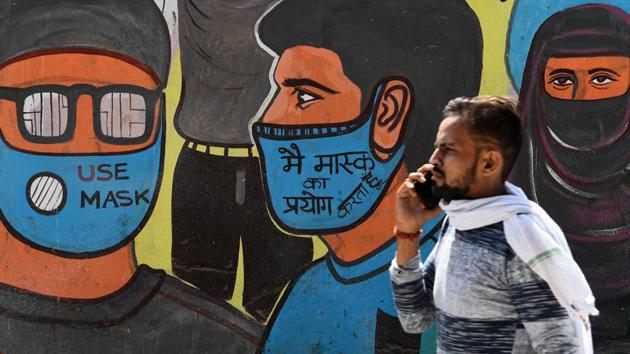
Updated on Oct 01, 2020 11:29 AM IST
A man walks past a mural urging the use of face masks as precaution against the coronavirus in New Delhi on September 29. One in every 15 individuals, or 6.6% of people above the age of 10 years in India, have been exposed to Sars-Cov2, the virus that causes Covid-19, until August, according to the findings of Indian Council of Medical Research’s (ICMR) second national sero survey released on September 29. (Sajjad Hussain / AFP)
2 / 8

Updated on Oct 01, 2020 11:29 AM IST
A health care worker collects swab samples from people at Mankhurd in Mumbai on September 28. If extrapolated across the country’s population, this would mean that nearly 88 million people may have been silently exposed to the virus, HT reported. (Pratik Chorge / HT Photo)
3 / 8
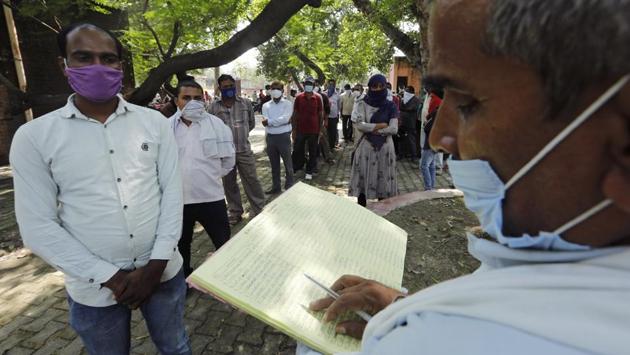
Updated on Oct 01, 2020 11:29 AM IST
People queue up to give samples to test for Covid-19 at a government hospital in Unchahar, Uttar Pradesh on September 28. The second iteration of ICMR’s national sero survey covered 29,082 individuals and was conducted between August 17 and September 22, in the same 700 villages and wards from 70 districts in 21 states that were covered in the first survey. (Rajesh Kumar Singh / AP)
4 / 8
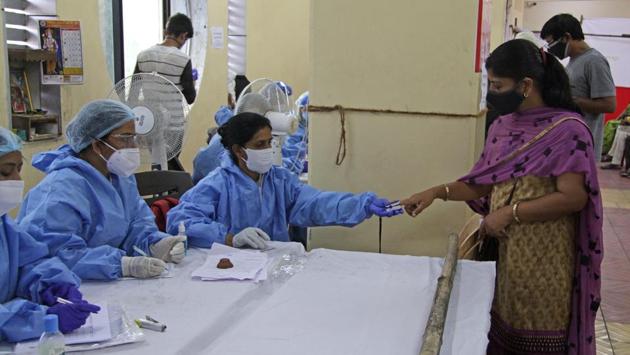
Updated on Oct 01, 2020 11:29 AM IST
A health worker tests a person’s blood oxygen levels in Dhankawadi, Pune on September 27. The first countrywide sero survey, conducted between May 11 and June 4, showed overall infection prevalence to be 0.73%. All other parameters about the two surveys were similar except for the targeted age bracket — the second phase included those 10 years and above instead of those 18 and above previously. (Ravindra Joshi / HT Photo)
5 / 8
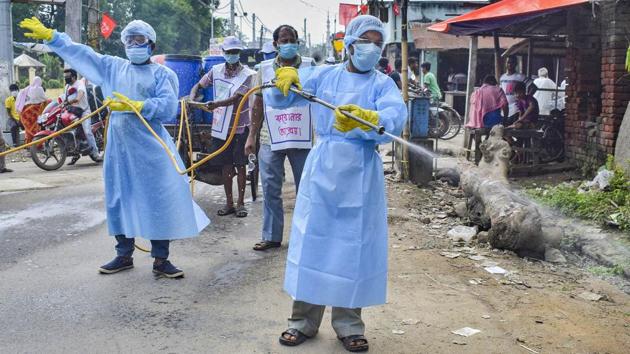
Updated on Oct 01, 2020 11:29 AM IST
Members of a voluntary organization spray disinfectant in a market, in Nadia on September 28. “We changed the age group in the second survey from 18 years to 10 years and above because infection was also seen in younger population. Sero survey gives us virus exposure prevalence, but you may or may not have developed the disease,” Dr Balram Bhargava, director general, ICMR told a press briefing. (PTI)
6 / 8

Updated on Oct 01, 2020 11:29 AM IST
Relatives console a woman whose husband died of Covid-19 in Guwhati on September 28. Urban slum (15.6%) and non-slum (8.2%) areas had higher Sars-Cov2 infection prevalence than that of rural areas (4.4%), and prevalence in adults (above 18 years of age) was also higher at 7.1%, the findings show. (Anupam Nath / AP)
7 / 8
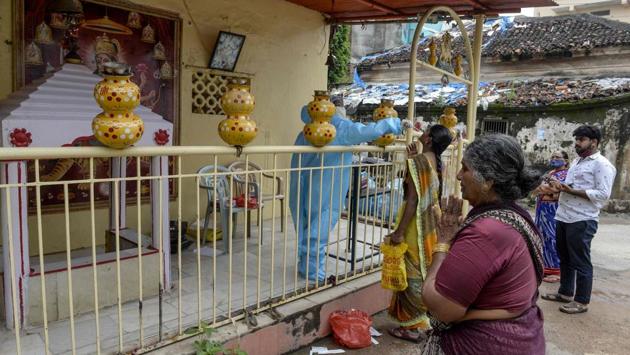
Updated on Oct 01, 2020 11:29 AM IST
A woman (C) prays as a health worker (L) collects a sample from a woman (2L) for a Covid-19 test at a temple in Hyderabad on September 30. “It goes on to show that a large percentage of population is still susceptible to contracting the infection which is why it becomes really important to follow Covid-19 appropriate behaviour,” Dr VK Paul, member (health), Niti Aayog, told HT. (Noah Seelam / AFP)
8 / 8
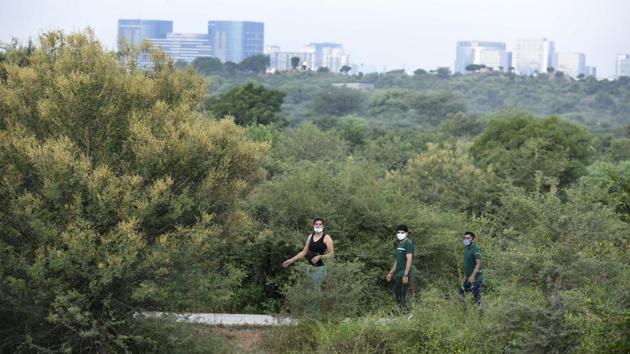
Updated on Oct 01, 2020 11:29 AM IST



